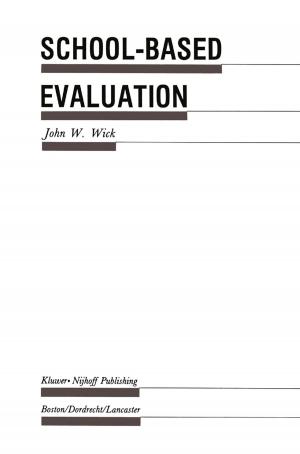Nijhoff, Van Ostaijen, "De Stijl"
Modernism in the Netherlands and Belgium in the First Quarter of the 20th Century. Six Essays
Nonfiction, Reference & Language, Foreign Languages, German| Author: | F. Bulhof | ISBN: | 9789401013970 |
| Publisher: | Springer Netherlands | Publication: | December 6, 2012 |
| Imprint: | Springer | Language: | English |
| Author: | F. Bulhof |
| ISBN: | 9789401013970 |
| Publisher: | Springer Netherlands |
| Publication: | December 6, 2012 |
| Imprint: | Springer |
| Language: | English |
FRANCIS BULHOF "What was Modernism?" That is the title of an address delivered in June of 1960 by the eminent comparatist Harry Levin at Queen's University in King ston, Ontario.1 Apparently, more than a decade ago, in the eyes of this per ceptive analyst of literature and the arts, the modernist movement had become a thing of the past. Having acquired full citizenship in the republic of letters, modernism had outlived itself. The title of Harry Levin's lecture bears an obvious resemblance to that of Fritz Martini's book-length essay Was war Expressionismus?,2 which dealt exclusively with the German variant of the expressionist movement. In the case of German expressionism there is much dispute concerning the precise moment of its decline and fall, but the political conditions provide at least a crucial dividing line in the year 1933. The end of modernism, however, a far more comprehensive movement which was not just limited to one country, is not so easy to determine. And there is also still much discussion about its roots.
FRANCIS BULHOF "What was Modernism?" That is the title of an address delivered in June of 1960 by the eminent comparatist Harry Levin at Queen's University in King ston, Ontario.1 Apparently, more than a decade ago, in the eyes of this per ceptive analyst of literature and the arts, the modernist movement had become a thing of the past. Having acquired full citizenship in the republic of letters, modernism had outlived itself. The title of Harry Levin's lecture bears an obvious resemblance to that of Fritz Martini's book-length essay Was war Expressionismus?,2 which dealt exclusively with the German variant of the expressionist movement. In the case of German expressionism there is much dispute concerning the precise moment of its decline and fall, but the political conditions provide at least a crucial dividing line in the year 1933. The end of modernism, however, a far more comprehensive movement which was not just limited to one country, is not so easy to determine. And there is also still much discussion about its roots.















